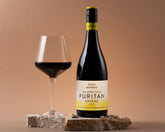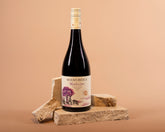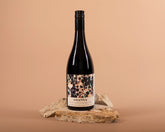Understanding the different types of red wine can enhance your appreciation and help you find the perfect bottle to suit any occasion. When it comes to red wine, the sheer diversity of options can be both exciting and overwhelming. At Guilt Free Wine, we’re here to guide you through the captivating world of red wine, highlighting key varieties that define this rich and complex category. From bold and robust to light and aromatic, understanding the types of red wine can enhance your tasting experience and help you find your perfect bottle.
Table of Contents
Key Takeaways
- Cabernet Sauvignon: Bold and full-bodied, perfect for hearty meals.
- Pinot Noi: Pinot Noir offers a delicate choice suitable for lighter dishes.
- Merlot: Merlot is great for those just beginning their red wine exploration.
- Malbec: Malbec is a bold choice, ideal for enhancing flavours in spicy and smoked dishes.
- Shiraz/Syrah: Rich and spicy, suitable for robust flavours.
- Zinfandel: Bold fruitiness with a spicy edge, perfect for BBQs.
Understanding Red Wine Varieties
Red wine comes in many styles, each with unique characteristics shaped by grape variety, wine regions, and winemaking techniques. We’ll explore the main types of red wine, delving into their characteristics, flavour profiles, and notable examples. Here’s an overview of several prominent types:
-
Cabernet Sauvignon
Characteristics: Cabernet Sauvignon, frequently regarded as the king of red wines, is noted for its deep, dark colour and full-bodied character. This variety is prized for its robust tannins and pronounced acidity. It typically exhibits flavours of blackcurrant, blackberry, and plum, complemented by notes of green bell pepper, tobacco, and sometimes even mint. A global heavyweight, Cabernet Sauvignon thrives in varied climates, known for its tannic grip and longevity.
Notable Regions: The grape thrives in various regions, including Bordeaux in France, Napa Valley in California, and Coonawarra in Australia. Each region imparts its unique characteristics to the wine, influenced by the local climate and soil.
Food Pairing: Cabernet Sauvignon pairs beautifully with hearty dishes like steak, lamb, and grilled meats. Its bold flavour can stand up to rich, flavourful dishes, making it a versatile choice for many meals.
-
Merlot
Characteristics: Merlot is recognised for its soft, velvety texture and accessible, friendly style. It typically offers flavours of ripe red fruits like cherry, plum, and raspberry. With softer tannins compared to Cabernet Sauvignon, Merlot is often considered more accessible to new red wine drinkers.
Notable Regions: Merlot is a standout in Bordeaux, notably on the Right Bank, where it is a key component of distinguished blends. It’s also widely produced in California, particularly in Napa Valley and Sonoma County, as well as in regions like Chile and Australia.
Food Pairing: Due to its smooth and fruity nature, Merlot pairs well with a variety of foods, including roasted chicken, pork dishes, and pasta with tomato-based sauces.
-
Pinot Noir
Characteristics: Pinot Noir is renowned for its elegance and complexity. It typically features a lighter body and lower tannins compared to other red wines. Its flavours often include red berries like strawberry and cherry, with additional notes of earth, mushroom, and sometimes even rose petals.
Food Pairing: Pinot Noir’s versatility makes it a great match for a variety of dishes, including roasted chicken, duck, and mushroom-based dishes. Its lighter body also makes it a good companion for salmon.
-
Syrah/Shiraz
Characteristics: Syrah, known as Shiraz in Australia, is a bold and full-bodied red wine. It showcases flavours of dark fruits such as blackberry and plum, accompanied by spicy and peppery undertones. Syrah wines from cooler climates often have a more restrained fruit profile, while those from warmer regions can be more intense and fruit-forward.
Notable Regions: Syrah is extensively produced in the Rhône Valley of France, serving as a fundamental element in wines like Côte-Rôtie and Hermitage. In Australia, Shiraz is a flagship varietal, with notable examples coming from Barossa Valley and McLaren Vale.
Food Pairing: Syrah/Shiraz pairs well with hearty dishes such as barbecued meats, lamb, and spicy dishes. Its bold flavours complement robust flavours and can handle a fair amount of spice.
-
Zinfandel
Characteristics: Zinfandel is known for its bold, jammy flavours and high alcohol content. It typically showcases flavours of blackberry, raspberry, and plum, complemented by spicy and peppery accents. Zinfandel varies from medium to full-bodied and is celebrated for its rich, fruit-forward character.
Food Pairing: Zinfandel’s rich and fruity character makes it a great match for barbecue, spicy sausages, and even hearty pasta dishes.
-
Malbec
Characteristics: Malbec is famed for its deep, dark colour and opulent, full-bodied taste. It typically offers flavours of blackberry, plum, and black cherry, with additional notes of chocolate, tobacco, and earthy undertones. Malbec often has a smooth texture with moderate tannins.
Food Pairing: Malbec pairs well with grilled meats, particularly steak and barbecue. Its robust flavours complement hearty, savoury dishes and can also handle spicy cuisine.
-
Tempranillo
Characteristics: Tempranillo is a versatile red wine known for its balanced flavours and moderate tannins. It commonly exhibits flavours of red fruits like cherry and plum, accompanied by hints of tobacco, leather, and earthy nuances. Tempranillo wines can range from light and fresh to rich and complex.
Food Pairing: Tempranillo is a versatile food partner, pairing well with tapas, roasted meats, and dishes with tomato-based sauces. Its balanced profile makes it suitable for a wide range of cuisines.
-
Sangiovese
Characteristics: Sangiovese is known for its bright acidity and flavours of cherry, red plum, and earthy notes. It often has a medium body with firm tannins and a characteristic tangy finish. Sangiovese wines can range from fresh and fruity to complex and age-worthy.
Food Pairing: Sangiovese pairs excellently with Italian cuisine, including pasta with red sauce, pizza, and grilled meats. Its acidity and structure make it a great match for rich and flavourful dishes.
Conclusion
The world of red wine is expansive and diverse, presenting a wide range of flavours and styles to accommodate all tastes. Whether you’re drawn to the bold and robust characteristics of Cabernet Sauvignon and Syrah, the smooth and approachable nature of Merlot, or the delicate elegance of Pinot Noir, there’s a red wine out there to enhance any dining experience. By exploring the different types of our red wines and understanding their unique profiles, you can deepen your appreciation for this timeless and versatile beverage. Exploring the different types of red wine can transform any dining experience. Contact Guilt Free Wine to explore our exquisite collection and connect with our experts who can guide you to the perfect bottle for any occasion. We’re here to make your wine selection as delightful as your dining.
FAQs:
Is Pinot Noir a light wine?
Yes, Pinot Noir is considered a light-bodied red wine, making it versatile with meals that include poultry or pork.
Can I age Merlot at home?
Although Merlot is often enjoyed young, it can be aged for a few years to enhance its smooth characteristics.
What makes Cabernet Sauvignon different from other reds?
Its distinct blackcurrant and cedar flavours set it apart, along with its ability to age gracefully.
Why choose Malbec from Australian vineyards?
Australian Malbecs are known for their rich, vibrant flavours and are an excellent choice for those who enjoy a fuller-bodied wine.
Which red wine is the best for beginners?
Merlot is often recommended for beginners due to its smooth, fruit-forward flavours and softer tannins.
Can red wine be paired with seafood?
Yes, lighter red wines like Pinot Noir can pair well with seafood, especially grilled or roasted varieties.







